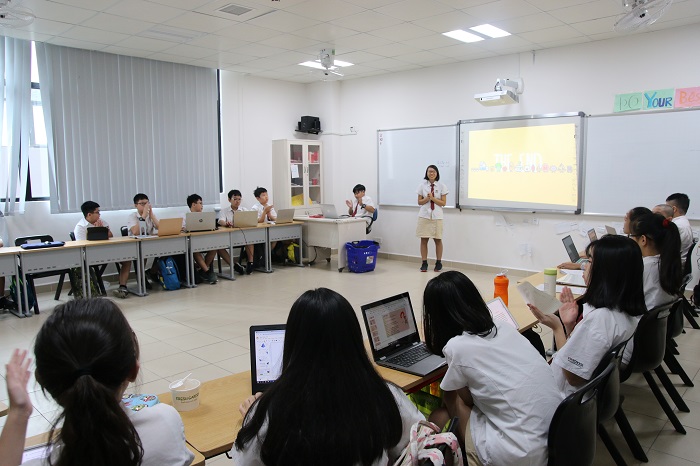Once they understand “Optimism”, Vinsers begin to change their mind and take action
What are the differences between optimists and pessimists? Do those differences come from a person’s natural state, or from habits which can be changed and improved? The students from class 5A1 at Vinschool Metropolis Primary School found the answers to the above questions after attending a CLISE (Character and Life Skills Education) lesson about “Optimism”.
The lesson started with a “1-1-1” challenge, before which the students had excitedly separated into pairs. For the challenge, each student would use one chopstick with one hand, and work together to pick up another chopstick and then put it into a vase. After two minutes of struggling, even the most successful team could manage only two chopsticks in the vase. The students complained: “This game is too hard!”; “I have never done this before; I can’t do it!”; “No one in my team is good enough”, etc.
The teacher didn’t respond to the students’ complaints at once. She said: “Let’s brainstorm and share what you know and remember about Optimism!” The students started to recall what they had learnt from other subjects or simply from their own experiences:
– “Optimism means thinking about positive things”.
– “Teacher…it means never giving up in difficult situations”.
– “It means looking forward to the good things”, etc.
There were many answers, and all of them were noted down by the teacher and added to the common database. This helped the students exercise their brains. Next, the teacher ordered: “From your own recent memories, please note down one thing that made you happy and one thing that didn’t live up to your expectation and explained why that was”. Using the “Think – Pair – Share” technique, the students shared their memories with their pair mates and group mates.
Then, the teacher concluded: “If you utilize positive thinking, when something unhappy comes along, you will see it as an opportunity to improve, learn, and grow. Just like when the leaves on the trees grow old and turn yellow and fall, this also indicates that the trees are growing and maturing.”
The students all attached their leaves of memories on the “tree of optimism” as a way to show that they knew the diversity of life and to remind themselves of the importance of their “attitudes” towards what had happened.
More interestingly, the activity “Back – in – time” helped the students change their words, thoughts, and actions in unhappy situations and show their positive attitudes through optimistic/positive words and actions. The students were excited at this “change-the-past” magic:
– Instead of saying “This game is too hard!”, we should say: “This game is hard, but my team has found a way to do it!”
– I won’t say: “I have never done this before; I can’t do it!”. Instead, I will say “I will try!”; this will help me feel better when starting to do the work.
– Saying “No one in my team is good enough to do it” will discourage us; we should say: “We will try to do it better next time”.
At the end of that exciting lesson, the students all thought of and wrote down one thing they would do better or change for “Optimism”. The lesson about optimism would not just stop there. It would continue in the teacher’s later talks and in all later situations, so optimistic words and actions could always be present and become the students’ own qualities and skills.







